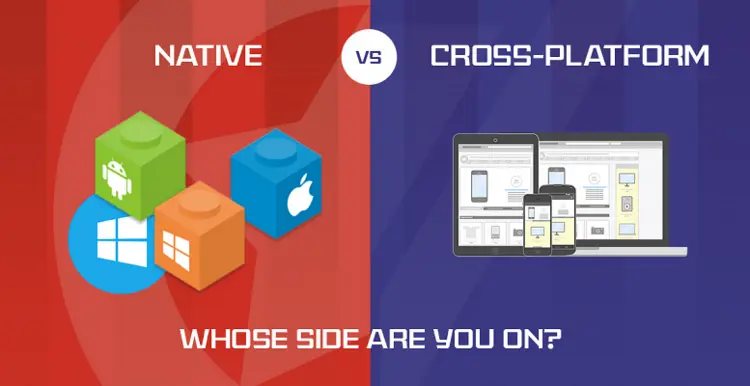Upcoming Trends of 2024 for React Js for Web Development

With 2024 upon us, changes are happening in web development. And yes, React.js is still at the helm.
Web development using React.js has shaped web development in recent times. Through the use of its virtual DOM, its structure based on components, and a thriving ecosystem, developers have been able to craft dynamic and powerful user experiences. React.js, always in sync with tech advancements, is evolving. This article will dive into the fundamental trends plotting the course of React.js development services. So, let’s explore its potential future together.
Also Read: Web Scraping in NodeJS Is Growing in Adoption
React.js: What is it, and why is it so popular?
Facebook came up with a JavaScript kit known as React.js. It helps programmers craft interfaces for web and mobile apps. It’s component-focused, which lets coders devise complex interfaces by combining distinct components.
Web development using React.js popularity has soared due to its scalability and simplicity. It’s the primary choice for web creation tasks these days. React.js for web development offers features like a virtual DOM, component reuse, and smooth data-binding, making app creation easier for developers. Plus, it offers plenty of third-party libraries, which is a boon for developers aiming to enhance their app functionalities quickly.
At the forefront of front-end development stands React.js as the most used JavaScript library, with over 40% market share. React.js has been used by 69% of developers according to the State of JavaScript 2022 poll, and more than half indicated they would continue using it. The same survey also showed that React.js was voted as the best JavaScript library by developers.
Developers have affection for React.js for several reasons, such as the introduction of new features and Upgrades. According to a report published by Grand View Research analysts, the global market for React.JS development services is expected to reach $28.6 billion by 2027.
React Js Web Development Trends in 2024
React.JS development is facing several trends going forward in 2024. These include the incorporation of machine learning abilities, uptake of the serverless design approach, and tooling improvements such as Redux and TypeScript. To stay competitive in today’s marketplace, developers must react to these changes by exploiting their knowledge base in building high-performance web applications.
Let’s take a look at some of them:
Wasm WebAssembly with React.js
Integration between WebAssembly (Wasm) and React.js has been regarded as one of the most promising developments for this framework going forward.
With WebAssembly, programmers can execute code written in languages like C++, Rust, and Go nearly as quickly as native code. When it comes to web browser functionality, it is distinguished by great performance. React.js apps may improve performance and response times by utilizing WebAssembly, which could boost the effectiveness and scalability of web applications.
SSR: Server-Side Rendering for Rehydration
Because it enhances both search engine optimization (SEO) and initial load time for React.js applications, server-side rendering, or SSR, is becoming more and more popular. With SSR, however, users can get content faster due to rendering React components on the server before sending them to the client side.
SSR has a problem which is rehydration where server-rendered HTML is replaced by client-side JavaScript to make the application interactive. To achieve smoother transitions and better user experiences, we may anticipate React.js to improve its support for seamless rehydration in the future.
React.js and state management
State management has always been a requirement for building React.js applications. As it stands, while React’s built-in state and seducer hooks suffice small to medium-sized applications, bigger projects require more dependable solutions.
To handle the state more efficiently, React.js may investigate better state management methods in the future or further integrate with third-party libraries like Redux, MobX, or Recoil.
Enhanced Concurrent Mode
The Concurrent Mode of React enhances the responsiveness and interactivity of an application, particularly when dealing with rendering-intensive tasks. Even when network connections may be poor, and UIs may turn out to be complex, React can perform numerous tasks concurrently in concurrent mode thereby improving user experience. With further refinement of Concurrent Mode by the React team, we can anticipate faster speed and shorter user interaction times.
Improved DevOps Integration and Developer Tools
React Js for Web Development is gaining momentum, and developer tools as well as DevOps integration, have become essential. It is to be expected that the React community will invest more in plugins and tools for profiling, debugging, and testing React applications. Additionally, React.js could witness improvements in its ability to integrate smoothly with serverless architecture and containerization hence leading to faster deployment and scaling processes.
PWAs (Progressive Web Apps) and Mobile-First Development
Current online apps must prioritize mobile development to overtake desktop usage using Progressive online Apps (PWAs). This has been achieved by making React.js better at mobile development using platforms such as React Native and others. Maximizing the user experience and performance on mobile devices means React.js will see further improvements in the future, ensuring smooth compatibility and a native-like experience.
By employing React Hooks, SSR, React Native, PWAs, improved state management, and React Concurrent Mode, developers can employ these benefits to create remarkably efficient, scalable, and immersive applications. By monitoring these trends, developers can keep pace with change and optimize React JS’s abilities within the evolving landscape of web development.
What about React.JS popularity in 2024?
React.js remains a popular choice among developers in 2024 due to several factors. One of the key reasons for its success is its component-based structure that allows the development of complex user interfaces while keeping the codebase manageable. As web applications become more intricate, the ability of React.js to break down UI elements into reusable components will allow easier code management.
Additionally, ReactJS widespread acceptance can be attributed to the strong support it receives from the community and its continuous evolution. The framework’s open-source nature has led to numerous libraries, tools, and resources that enhance web app development. The active React community always shares best practices, solutions, and updates, making sure that developers stay updated with the latest trends and technologies. This collaborative environment fosters innovation and empowers web developers to overcome challenges, making React.js an appealing choice for building modern, responsive, and feature-rich web applications in 2024.
Conclusion:
React.JS’s robustness in building user interfaces for web applications will remain popular among developers for years to come. Therefore, enhancing efficiency is also something React Js Web Development does. Even though some updates might be slow, they may introduce new features that may completely change the way we develop the web using React.
Web Development with React Js will undoubtedly become greater and more significant as we progress toward creating responsive designs and rich user experiences that satisfy the demands of our fast-paced, data-driven culture.






